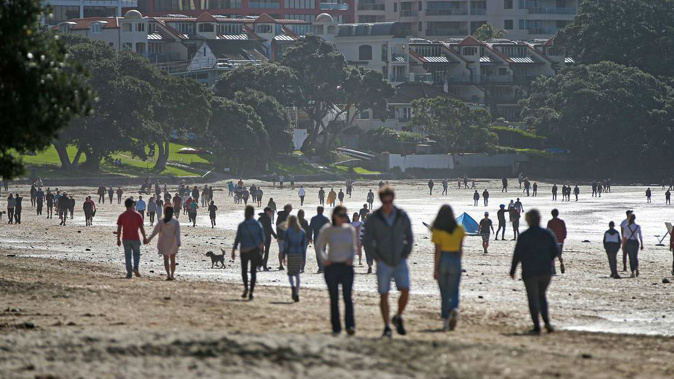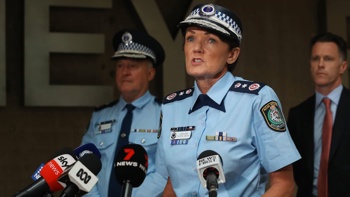
Life at alert level 2 means we can resume many of our favourite pastimes and see our friends again.
You can expect the doors of some shuttered businesses to open — but life as we know it will take on a new normal.
After an extended Cabinet meeting this morning, Prime Minister Jacinda Ardern announced we are moving into level 2 in stages.
"We all know there is more to do. We may have won a few battles but we have not won the war," Ardern said Monday.
Cabinet had agreed the country was ready to move to level 2.
Retail stores, malls, cafes, restaurants, cinemas and public spaces including playgrounds and gyms can open this Thursday.
On Monday, May 18, children and young people will return to school.
And next Thursday, May 21, bars will be able to open, as long as they maintain the "three Ss" rule outlined last week.
This rule means hospitality businesses should keep groups seated, separated and they should use table service with a single server to a group. This means each group has one server, though servers can each serve more than one table.
Bars had been left until last because they posed the most risk, Ardern said, for example South Korea had opened bars but then closed them again after there was an outbreak.
"There does need to be a new normal," she said.
"We will be breaking out of our bubbles. We will be around more people."
Social gatherings should be kept small for now - 10 people or less, she said.
The Prime Minister did not think level 2 would "necessarily" be in place for longer than level 3, but it depended on factors such as the number of new Covid-19 cases.
Border restrictions would remain for a long time, as would the expectation of the public observing hand hygiene practices.
"If we slacken up, we might move in the wrong direction," Ardern said.
Personal movement and space
- When moving about in public, ideally stay two metres away from strangers. Take extra care if you interact with people you don't know as contact tracing won't be easy. These situations include playgrounds, parks, shopping malls or walking along the street.
- A one-metre physical distancing rule will be used in most other environments, unless there are mitigating measures. Examples of environments where you should maintain one metre distancing include cafes, church groups, gatherings, restaurants and retail stores.
There will be a few instances at alert level 2 where it won't be practical to maintain physical distancing, so there will be other measures to manage public health risks. Examples include hairdressing, physiotherapists, home help, and public transport.
Gatherings and events
- Physical distancing, infection prevention and control requirements must be met.
- All gatherings should record attendees to help for contact tracing if needed.
- Gatherings would be limited to 10 people. That 10-person limit will be reviewed in two weeks. Funerals have a limit of 50 people.
- According to the official Government website on Covid-19, food and drink is allowed at gatherings, meaning you can have food at wedding receptions or after a funeral or tangihanga. It should be prepared carefully and served individually, for example, not from a buffet.
- According to the official Government website on Covid-19, you can have friends and family over to visit your home, but play it safe — keep surfaces clean, wash your hands, and keep the numbers low so you can practice safe distancing.
- No one can attend any gatherings or events if they have Covid-19 symptoms or if they need to be in isolation/quarantine for any reason.
Businesses, workplaces and public venues
- Under alert level 2 all businesses can open if they can do it safely. Businesses must follow public health guidance about physical distancing and contact tracing. Alternative ways of working are still encouraged where possible. For example; remote working, shift-based working, physical distancing, staggering meal breaks and flexible leave.
When engaging with customers businesses should:
- Maintain good contact registers, or contact tracing records, to record everyone who they interact with on the premises.
- Maintain physical distancing of one metre between groups of customers.
- Hospitality businesses should keep groups seated, separated, and use a single server if possible. This means each group has one server, though servers can each serve more than one table.
- For some businesses, close personal contact is required to deliver a service. In addition to maintaining robust contact registers and good hygiene practices, specific guidance for key sectors is being developed by the Ministry for Business, Innovation and Employment and WorkSafe.
- Many public venues, such as museums, cinemas, food courts and markets, will be open following the Government's announcement of that timing. However, restrictions will include the one metre physical distancing rule. This might require limiting the number of people inside at once. Some venues may stay shut if they can't open safely.
Exercise, sport and recreation
- Under alert level 2 Kiwis will be able to resume walking, biking and hunting on public conservation land. Public swimming pools and gyms will reopen with restrictions. Boating and motorised watersports will resume.
- Sport activities (including those that involve close contact) are allowed but only if good contact registers are maintained, the conditions on gatherings are observed and - where practical – physical distancing is used. No one should train or play if they have symptoms of Covid-19.
- Last week, Sport and Recreation Minister Grant Robertson said professional sports could resume domestically subject to necessary public health measures. At that stage, Investec Super Rugby and the ANZ Premiership Netball League had already confirmed their intention to resume domestic competition.
Public health advice is that schools and early learning services are safe to open onsite at alert level 2 to all learners. Schools will not make this transition midweek but at the start of next week.
- According to the Ministry of Education website, playground, sports equipment use and sports, including contact sports, can resume under certain conditions.
- School transport services will also return to normal schedules.
Tertiary education
Tertiary education facilities will implement public health requirements and physical distancing as appropriate for the context. They will need to maintain distance learning capability to help manage within these constraints, and ensure safety of staff and students at risk of Covid-19.
- Physical distancing of two metres should be maintained where people do not know each other and where contact tracing measures are not in place. In areas designated "controlled learning spaces" or "other controlled environments", where contact tracing and strict hygiene practices are in place, people should be encouraged and enabled to maintain physical distancing of one metre, where possible.
- According to a Ministry of Education bulletin last week, hand sanitiser should be available at entry to classrooms and lecture theatres. Students and staff should ensure they are regularly washing and drying their hands.
- Similarly, surfaces that multiple people might touch such as desks, door handles and keyboards should be cleaned as often as is practical.
- On-campus businesses such as gyms, pharmacies, cafes, restaurant, etc. must operate in accordance with the public health control measures that apply to that type of business.
- Workplace-based learning will be conducted within the specific rules applicable to the relevant industry.
Take your Radio, Podcasts and Music with you









